Nanomagnetism and Spintronics (NanoSpin)
Our research focuses on experimental studies of magnetic, magneto-optical, and spin-transport phenomena in new functional materials and hybrid nanoscale structures.
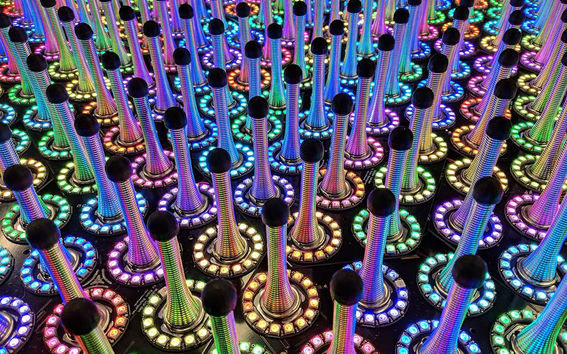
The project focused on manipulation of magnetic systems without applied magnetic field, and the team demonstrated plasmon-assisted demagnetization and optically assisted magnetic switching in nickel nanoparticle arrays. This proof-of-concept project opens up new directions in integrated magneto-optical memory, data storage and processing applications. As a side project, the team demonstrated that certain nanoparticle arrays can detect refractive index changes with excellent sensitivity. These results are relevant for label-free biosensors.
Duration of the project: July 2015 – June 2017
Budget: € 148 000
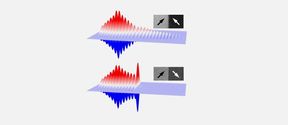
Our research focuses on experimental studies of magnetic, magneto-optical, and spin-transport phenomena in new functional materials and hybrid nanoscale structures.
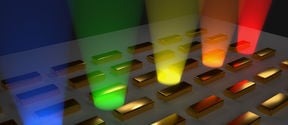
The research interests of the QD group are quantum coherent dynamics and quantum many-body phenomena in designed nanosystems.
The project focused on realizing artificial structures with engineered topological properties. We achieved significant progress on artificial lattices with tuneable band structures and on engineered systems of magnetic impurities on superconducting substrates.
We created analogues of two tight-binding models of fundamental importance: the polyacetylene (dimer) chain with topological domain-wall states, and the Lieb lattice with a flat electron band. We observed the formation of so-called coupled Yu-Shiba-Rusinov (YSR) low energy bound states, induced by impurities on superconductors. This is a promising first step for realization of novel topological states predicted in YSR lattices. In addition, we extended the theoretical understanding of these systems to disordered magnetic impurity chains and to impurities on p-wave superconductors.
Realizations of these structures open new vistas for future nanoelectronics.
Duration of the project: September 2015 – August 2017
Budget: € 150 000
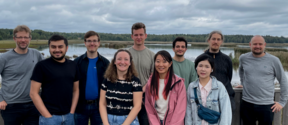
We focus on the experimental study of nanostructures, where the precise nature and location of every atom matters.
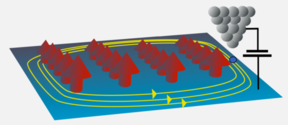
Our research concentrates on fundamental properties of matter.
NOMQUT work concentrated on quantification of memory effects in small quantum systems strongly coupled to the environment. The motivation was to understand how strong coupling affects both the equilibrium states of small quantum systems as well as quantum systems driven by an external drive. The project focused in particular on the flow of heat and information for such cases, and quantified them by using the BLP trace distance measure based on the density matrix of the system. The results revealed complicated and somewhat unexpected dependence of the information flow on the coupling strength, and other relevant parameters such as the number of degrees of freedom in the environment. NOMQUT results could be used to develop guidelines for environmental engineering of small quantum devices.
Duration of the project: September 2015 – August 2017
Budget: € 380 700
Turku Centre for Quantum Physics: http://www.tcqp.fi

The MSP group is recognised worldwide in the development of multi-scale and coarse-graining methodologies and their application to condensed matter systems.

We investigate mesoscopic physics and its sensor applications. The main focus is on charge transport and thermal properties of metallic, superconducting and hybrid nanostructures.
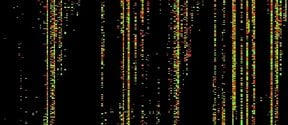
Non-Markovian Processes and Complex Systems

Turku Centre for Quantum Physics coordinates the shared activities of the participating groups and provides a unified background for teaching of quantum mechanics.

TQT is a theoretical physics research group at the University of Turku. Our research primarily focusses on open quantum systems, non-Markovianity, cold atoms, quantum probes, quantum tomography and incompatibility. TQT participates the activities of CQE at Aalto.
The project seeks to find optimum materials for quantum technology, which would enable advances in testing of quantum computer architectures and development of ultra-sensitive probes. The work pursues quantum technology that is viable at room temperature using tools that are unavailable in the ordinary fabrication environments. It relies on the strong expertise of the participating groups in quantum physics and quantum engineering with emphases on materials science, quantum optics, spintronics and semiconducting nanodevices.
Duration of the project: September 2015 – August 2017
Budget: € 150 000
We have a major effort on experimental low-temperature physics, but we also carry out computational and theoretical work down to fundamental quantum mechanics.
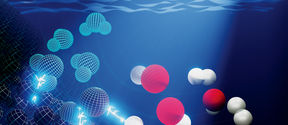
Professor Ilkka Tittonen
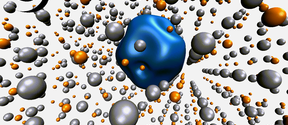
The Antimatter and Nuclear Engineering group specializes in the development and applications of positron-based spectroscopic tools in condensed matter research.
QMET aims at designing and fabricating new type of quantum metamaterials, to be used as parametric amplifiers. These amplifiers provide significant advantages for sensitive measurements in nanophysics, and several groups within CQE are ready to incorporate them in their experiments. In particular, we plan to use them into the measurement setup of superconducting qubits and also to study the entanglement between the signal and idler. The fabrication technology is immediately transferrable, and the amplifiers have real commercial value as a low-noise component or product in several known companies. The project relies on the leading expertise of the participating research groups in nanofabrication, characterization and application development of quantum metamaterials.
Duration of the project: December 2015 – December 2017
Budget: € 155 000
TERAHERTZ SENSING group led by Docent Juha Hassel
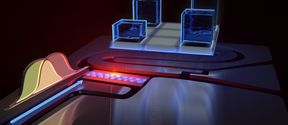
Our group is part of the effort in nanoelectronics in the Low Temperature Laboratory, Department of Applied Physics. The group is doing research in such fields as quantum information and quantum-level effects in superconducting devices, quantum coherent matter, and interaction of electromagnetic fields with nano-structured materials.
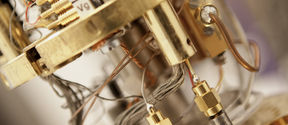
Nano group of the Low Temperature Laboratory investigates fundamental quantum phenomena in nanostructures using low temperature and electronic transport measurements.
The project studied the behaviour of cryogenic liquids with the aim to suppress evaporation. A dedicated chamber was constructed, where conditions including temperature and atmosphere could be controlled. First experiments were successfully carried out, validating proof of concept. This pathfinder project lays the groundwork for a more thorough and systematic study.
Duration of the project: August 2015 – January 2017
Budget: € 150 000
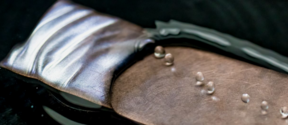
Functional soft materials and wettability of surfaces are the key research interests of Soft Matter and Wetting research group at Aalto University Department of Applied Physics.

Our group is part of the effort in nanoelectronics in the Low Temperature Laboratory, Department of Applied Physics. The group is doing research in such fields as quantum information and quantum-level effects in superconducting devices, quantum coherent matter, and interaction of electromagnetic fields with nano-structured materials.
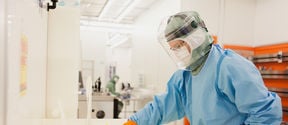
Research group led by Professor Sami Franssila
QMETRO aims at improving selected parametric amplifier technologies, with existing proof-of-concepts. It also seeks to open up new experimental areas in sensitive detection of signals. The project relies on the leading expertise of the participating research groups in Josephson, nanomechanical, and kinetic-inductance amplifiers, device fabrication and nanoelectronics.
Duration of the project: December 2016 – December 2018
Budget: € 325 000

The NEMS group focuses on studies of micro- and nanomechanical resonators near the quantum ground state of moving objects.

Nano group of the Low Temperature Laboratory investigates fundamental quantum phenomena in nanostructures using low temperature and electronic transport measurements.

Our group is part of the effort in nanoelectronics in the Low Temperature Laboratory, Department of Applied Physics. The group is doing research in such fields as quantum information and quantum-level effects in superconducting devices, quantum coherent matter, and interaction of electromagnetic fields with nano-structured materials.
DTM presents the first steps in constructing and characterizing artificial quantum materials. It focused on new man-made topological states of matter realized in engineered solid-state atomic lattices, self-assembled molecular systems, and heterostructures of two-dimensional materials. The Topological states of matter hold exceptional promise for future electronics, and in realizing new technologies, especially quantum information applications. The project relies on strong expertise of participating groups in construction of atomic lattices by scanning probe microscopies and synthesis of 2D materials (STM), phenomenological modelling of topological matter (TQM), complemented with atomistic modelling and machine learning (SIN, CEST).
Duration of the project: January 2018 – December 2019
Budget: € 200 000

We focus on the experimental study of nanostructures, where the precise nature and location of every atom matters.

Our research concentrates on fundamental properties of matter.
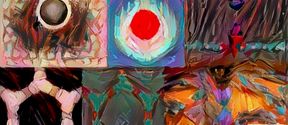
In the SIN group we apply and develop various atomistic and quantum mechanical simulation methods to study surface and interface physics at the nanoscale, with particular emphasis on working closely with experimentalists and technologists.
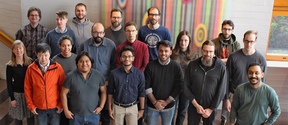
CEST is developing electronic structure and machine learning methods and applying them to computational materials science problems.
The project aims at creating truly new hybrid quantum systems, with new functionalities foreseen in the classical limit. Micromechanical systems provide a great platform for pushing quantum mechanics to macroscopic scales and for ultra-sensitive sensing of mass or distance. OPTOMAGNON explores integration of quantized excitations present in magnetically ordered matter with coherent micro-mechanical and micro-acoustic modes. The project relies on the leading expertise of the participating groups in experimental research on quantum microwave optomechanics and spintronics. The project contributes to a major paradigm shift in the field of magnonics.
Duration of the project: January 2018 – June 2019
Budget: € 150 000

The NEMS group focuses on studies of micro- and nanomechanical resonators near the quantum ground state of moving objects.

Our research focuses on experimental studies of magnetic, magneto-optical, and spin-transport phenomena in new functional materials and hybrid nanoscale structures.
The project has demonstrated quantum photonic sources based on the emerging two-dimensional (2D) materials. It will act as a stepping stone with tremendous potential for next generation secure optical communications, sensing and metrology applications. The project relies on the leading expertise of the participating groups in synthesis/fabrication and integration of low-dimensional nanomaterials, such as nanowires, (single-wall carbon) nanotubes and related 2D materials for electronic and optoelectronic applications.
Duration of the project: February 2018 – January 2020
Budget: € 300 000
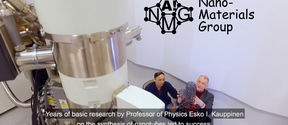
The NanoMaterials Group, headed by Prof. Esko I. Kauppinen, is among the top aerosol technology laboratories in the world and offers a unique environment for strong interdisciplinary research and a proven track record of productive cooperation.
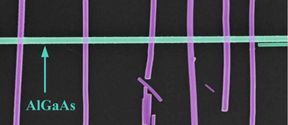
Professor Zhipei Sun
Professor Harri Lipsanen
DMAGLEV has enabled the design and construction of a novel experimental setup aimed to be used in levitodynamic experiments with nano- and micrometer-sized particles by using magnetic fields, with the possibility of utilizing also optical fields (optical tweezers) simultaneously in the future.
Duration of the project: January 2019 – December 2020
Budget: € 78 000
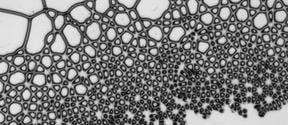
Research group focused on physics of soft and living materials

Our research focuses on experimental studies of magnetic, magneto-optical, and spin-transport phenomena in new functional materials and hybrid nanoscale structures.

The NEMS group focuses on studies of micro- and nanomechanical resonators near the quantum ground state of moving objects.
The project has focused on the development of a Josephson vector signal generator; a cryogenic signal source that provides microwave pulses of well-defined amplitude and phase. JVSG will significantly impact future research in quantum computing and quantum sensing but also in classical research fields such as material science, spin-resonance, and communication. The project relies on the leading expertise of the participating groups in refrigeration, thermodynamics, single-electron phenomena, and superconducting quantum nanoelectronics.
Duration of the project: October 2018 – March 2020
Budget: € 134 000
We have a major effort on experimental low-temperature physics, but we also carry out computational and theoretical work down to fundamental quantum mechanics.

We investigate mesoscopic physics and its sensor applications. The main focus is on charge transport and thermal properties of metallic, superconducting and hybrid nanostructures.
Applied Quantum Electronics Group (VTT, Finland)
Nano and molecular systems (University of Oulu, Finland)
The project aims at a new resolution of understanding the neural circuit function and its adaptation to quantal signals at the sensitivity limit. It is a pioneering initiative in the field of quantum biology and expands the possibilities of quantum technology in the field of neuroscience. The project relies on strong expertise of the participating groups in neuroscience, quantum information, photonics and optoelectronics.
Duration of the project: September 2018 – August 2020
Budget: € 80 000
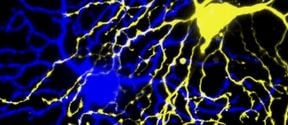
We study novel signal processing mechanisms and their adaptive dynamics at the synaptic and cellular-element level across the entire neural circuit of the retina.

Professor Zhipei Sun
Zeilinger Group (IQOQI Vienna): https://www.iqoqi-vienna.at/research/zeilinger-group/
The goal of the project is to create the first nanoscale topological laser, based on metal nanoparticles. The results will allow a novel approach to build small components, miniaturized and integrated optical circuits, ultimately enabling ultrafast operation speeds. The project has high relevance to optics in information processing and sensing, and it relies on the leading expertise of the participating groups in plasmonics, quantum theory and nanomagnetism.
Duration of the project: October 2018 – September 2020
Budget: € 200 000

Our research focuses on experimental studies of magnetic, magneto-optical, and spin-transport phenomena in new functional materials and hybrid nanoscale structures.

The research interests of the QD group are quantum coherent dynamics and quantum many-body phenomena in designed nanosystems.